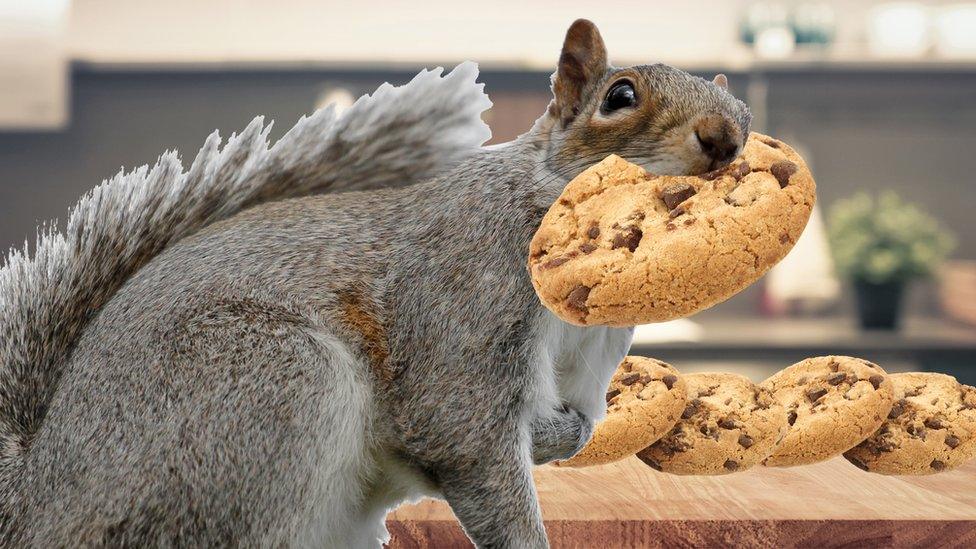Baby squirrels freed from tail tangle in Wisconsin
- Published
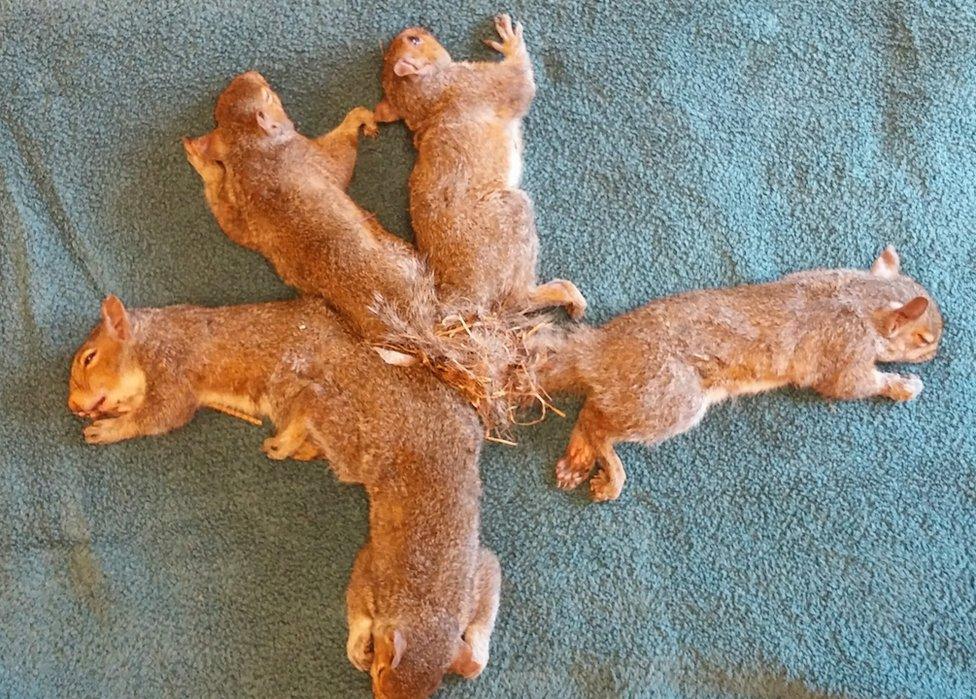
The five juvenile squirrels had to be anaesthetised before their tails could be separated
A US wildlife centre has saved five young grey squirrels after their tails became dangerously fused together.
The siblings had become entangled with the grass and plastic strips their mother used to build the family nest.
They were handed in at the Wisconsin Humane Society's Wildlife Rehabilitation Centre, which worked to save their tails and possibly their lives.
The five were cut free with scissors while under anaesthetic.
Allow Facebook content?
This article contains content provided by Facebook. We ask for your permission before anything is loaded, as they may be using cookies and other technologies. You may want to read Meta’s Facebook cookie policy, external and privacy policy, external before accepting. To view this content choose ‘accept and continue’.
Squirrels need their tails for balance and warmth, so it was important to try to preserve them as much as possible, the centre said on its Facebook page, external.
"You can imagine how wiggly and unruly (and nippy!) this frightened, distressed ball of squirrelly energy was, so our first step was to anesthetise all five of them at the same time," the centre said.
"With that accomplished, we began working on unravelling the 'Gordian Knot' (Google it) of tightly tangled tails and nest material.
"It was impossible to tell whose tail was whose, and we were increasingly concerned because all of them had suffered from varying degrees of tissue damage to their tails caused by circulatory impairment."
Though a little worse for wear, the tails were successfully separated from the grass and plastic in about 20 minutes.
The creatures will soon be free to resume a tangle-free life in the wild, the centre said.
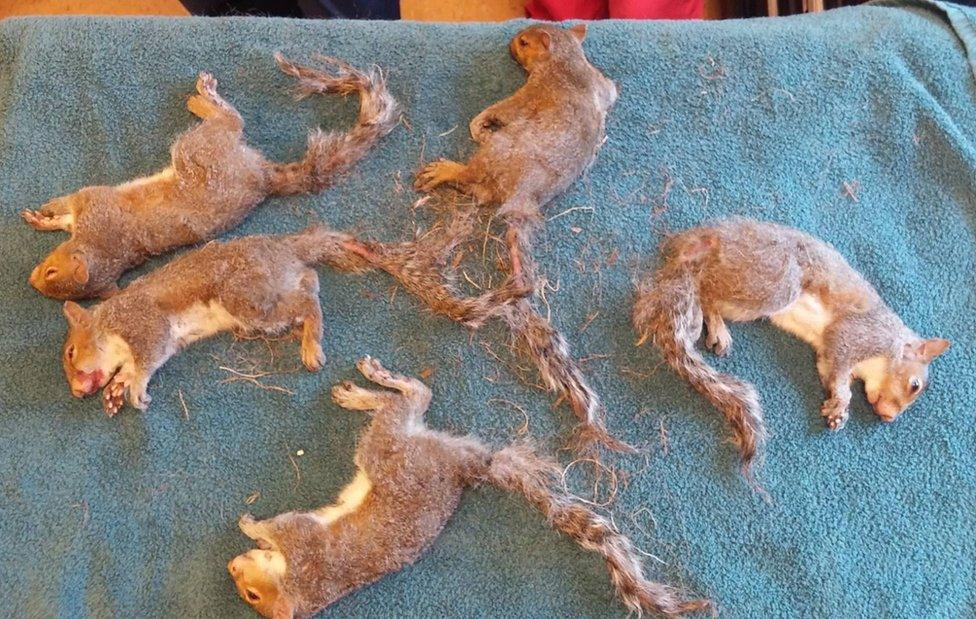
The five, pictured waking up from their ordeal, are now free to scamper once more
- Published9 April 2018
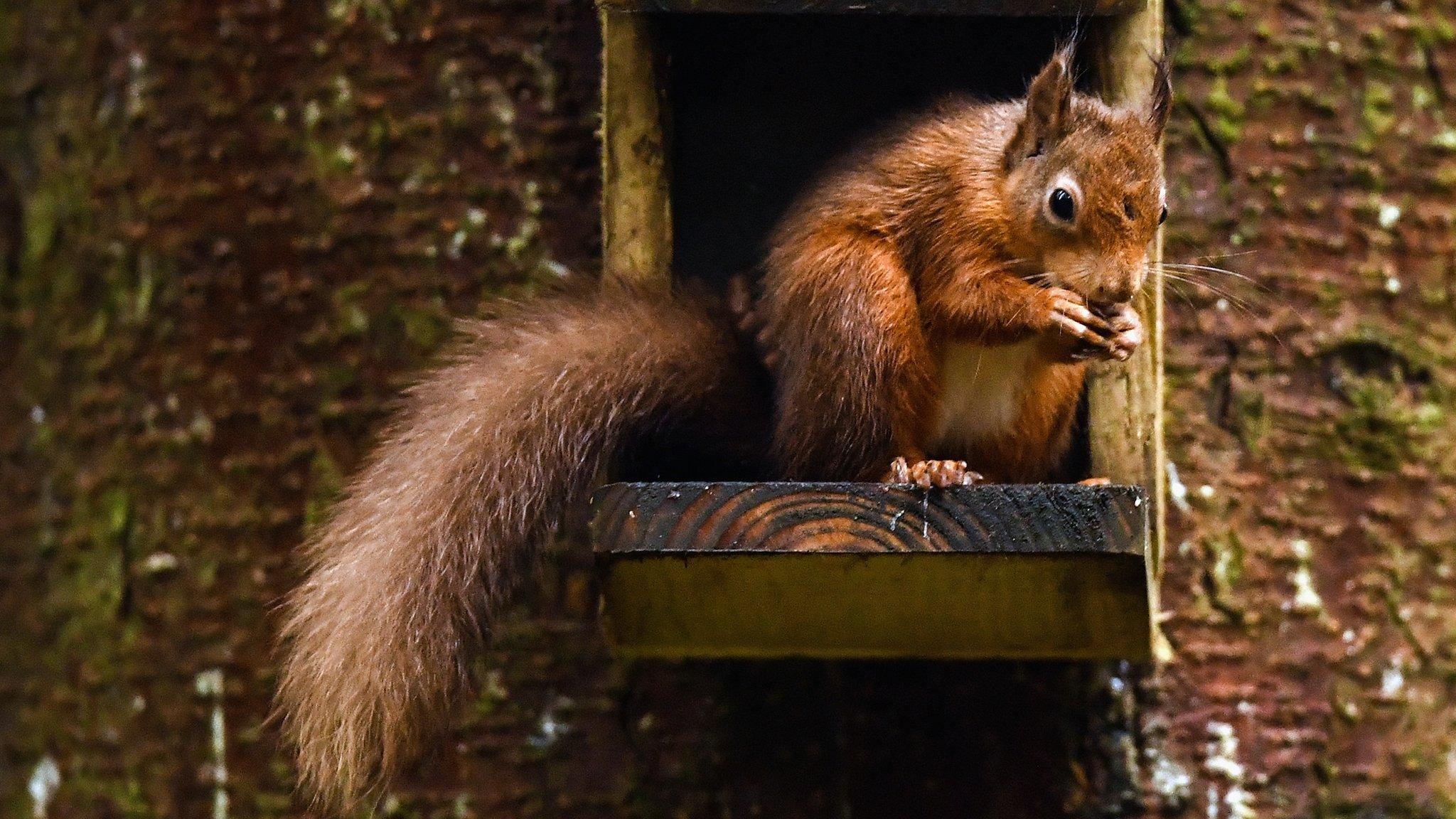
- Published4 April 2018
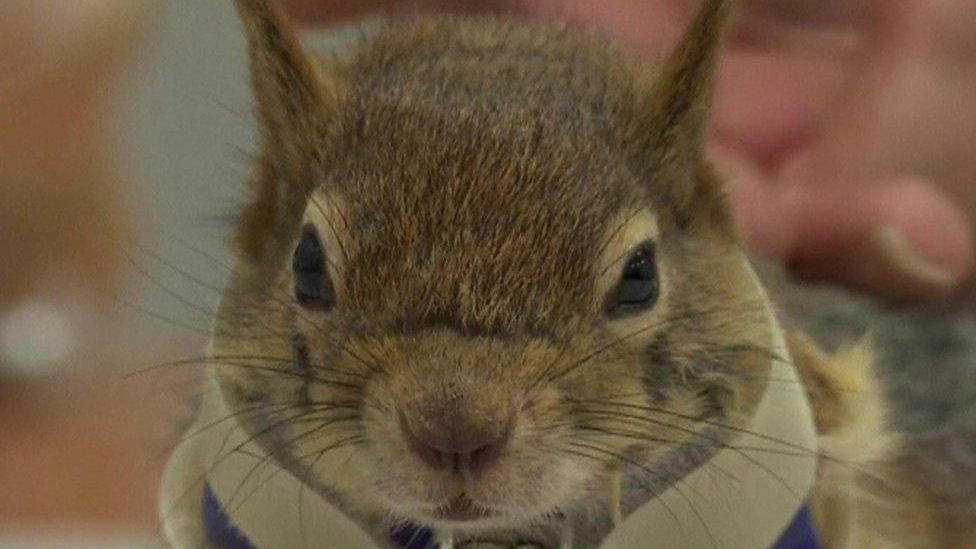
- Published2 January 2018
